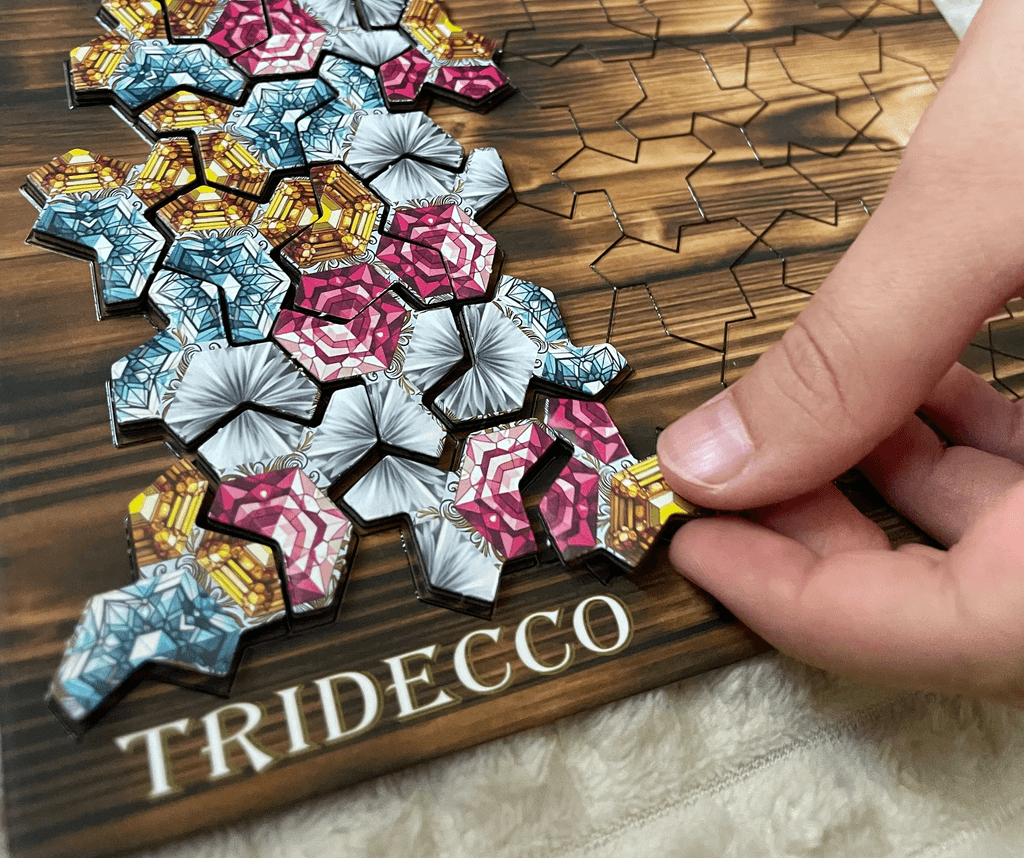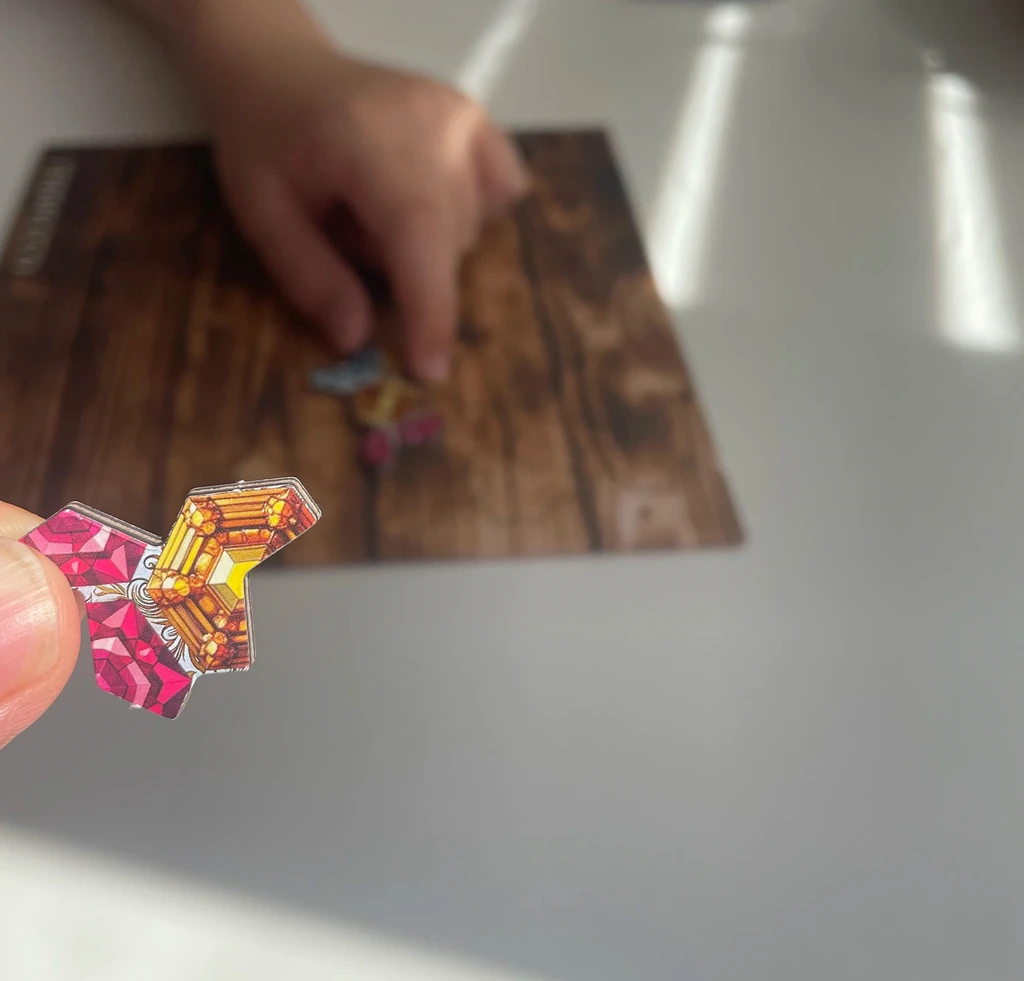"Tridecco is a captivating puzzle game inspired by the 13-sided Einstein shape" - reads the game's official website. According to BGG, "Puzzle games are those in which the players are trying to solve a puzzle. Many puzzle games require players to use problem solving, pattern recognition, organization and/or sequencing to reach their objectives." This perfectly applies to Tridecco as well. It captures the feel of classic puzzle games, while the unique shape introduces a gameplay experience that's equally unique.
2-4 players, 10-25 mins, 5+
The 13-sided Einstein shape - Tridecco style

Let's begin the review with this: ever since the game arrived, it's been taken out every single day. I've already played several rounds with my 8-year-old daughter - and, more than once, she's been the one to ask for it. And that's despite the fact that she couldn't win at first.
I always count that among the greatest achievements when it comes to board game pedagogy, and I'm genuinely happy to see it working at home, too. Of course, it takes something intriguing and challenging to make that happen - and Tridecco delivers both beautifully.
Opening the box, I was struck by the impressive quality: the board's material, the design, the magnets, the solid shapes - it just feels good to hold. Personally, that matters a lot to me. I often say the same about Tantrix - it's one of the best-sounding board games I know. There's just something deeply satisfying about rattling those tiles.
For me, the most important quality of puzzle-style board games is the calm, sometimes meditative act of placing pieces - an act that results in something unique and ever-changing. It's easy to get lost in this quiet building, this sense of shared creation - even if, at its core, it's still a competitive game. The competition and the rules simply frame the experience; they don't push themselves to the foreground.
That's exactly why I'm always glad to come across a game with a simple ruleset. The base game of Tridecco is genuinely playable from the age of 5, but even the more complex rules feel elegant. The ability to swap tiles adds a new layer to the tactics, and creating two hexagons at once brings on a kind of flow that I love - and I'm glad the game rewards it. We haven't managed to make three at once yet, but I can't wait to try.
Educational Value
Tridecco develops skills and modes of thinking that are closely connected to mathematics, logic, and spatial reasoning:
- Spatial orientation: The game supports the development of spatial perception, as players need to visualize how the unique 13-sided Einstein shapes fit together.
- Pattern recognition and geometric thinking: The game enhances the ability to recognize patterns and understand geometric structures.
- Problem-solving: Finding optimal placements, forming new shapes, and seizing tactical opportunities all strengthen logical thinking and problem-solving skills.
While playing

One thing I would definitely highlight is the way Tridecco supports the development of mathematical motivation. I truly believe that board games are one of the most effective tools for shaping attitudes, and for practicing and strengthening specific cognitive skills.
I'm not exactly a very direct kind of educator - what I find most beautiful in pedagogy is when I can gently nudge something within a child, and then things just unfold on their own. In the case of Tridecco, simply mentioning that the shape it uses is a recently discovered solution to a mathematical problem is exactly that kind of pedagogical spark. You can uncover so much about mathematics with just a little reading - and in doing so, you find yourself wonderfully far from the world of school, while still deeply engaging with a subject that's central to the school experience.
Of course, how deeply one dives in is personal, but games like this undoubtedly have a positive effect on mathematical motivation. This isn't your typical example - it's a bit mysterious, and unless you truly understand the proof, it's essentially incomprehensible. But you can still feel it. And the flow of the game makes you feel it too - because you're constantly finding new and unexpected connections, and that sense of discovery is there even if you don't understand why it's happening.
There's also something delightfully clever about how the game takes this infinite concept and forces it into a finite space, where the hexagons create patterns that appear to repeat.
Maybe it's obvious from this text, but yes - this excites me. And that energy seems to spread to the people I play with, which means I get to gently nudge their own mathematical motivation, too.
Summary
I can wholeheartedly recommend this game to everyone. It's easy to learn, easy to play, but it stays interesting - its unique shapes bring real challenges, and it playfully draws on a beautiful piece of mathematical discovery. The components are flawless, the design is elegant, and the gameplay is simple, engaging, and genuinely fun.
Go Tridecco!
